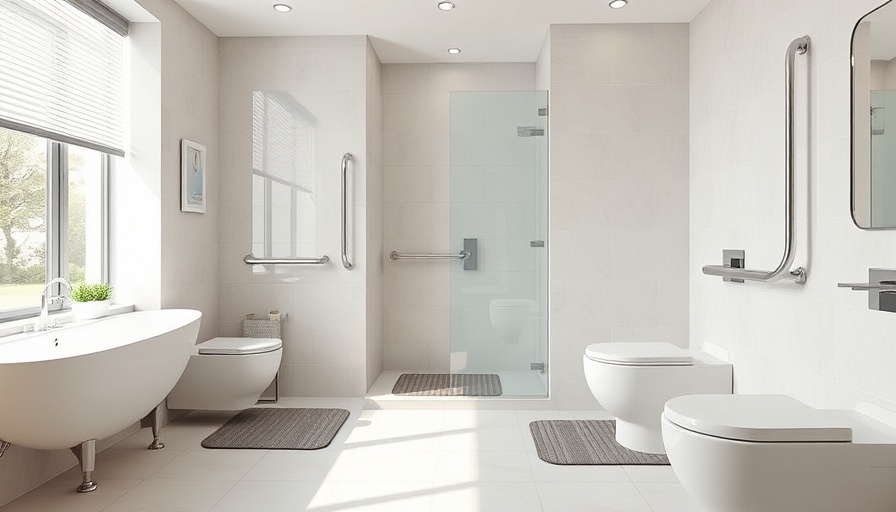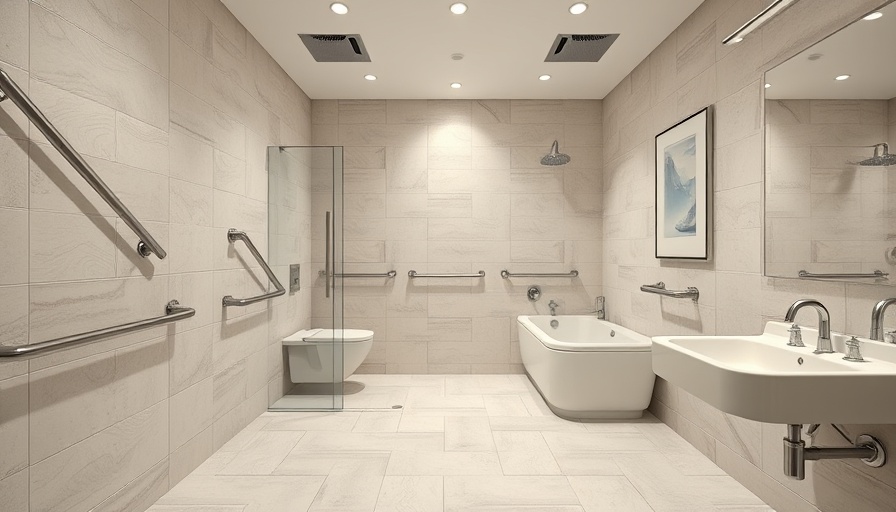
Why Bathroom Safety Should Be a Top Priority
Bathrooms can be hazardous spaces, especially for the elderly and those with mobility challenges. Statistics show that falls in the bathroom are a leading cause of injury in individuals over 55, highlighting the need for a proactive approach to bathroom safety. Understanding the specific features that can minimize risks is essential for creating a safe living environment.
Non-Slip Flooring: Your Bathroom’s First Line of Defense
One of the first considerations for enhancing bathroom safety is the flooring. Non-slip flooring is critical in reducing the risk of falls, particularly in wet conditions. Toms River professionals recommend options like textured tiles or specially designed vinyl flooring that offer increased traction. These modern materials not only improve safety but also come in various designs to suit personal tastes.
Regular upkeep is paramount, including thorough cleaning to prevent slip hazards due to soap scum buildup. A well-maintained non-slip surface can significantly decrease accidents while keeping your bathroom stylish and functional.
Grab Bars: Essential Supports for Independence
Grab bars are indispensable fixtures that provide essential support for individuals of all ages. Properly placed near the toilet and in the shower can make all the difference, dramatically reducing the risk of falls. They assist with stability, acting as a lifeline for elderly individuals and those with mobility issues.
When choosing grab bars, opt for those made from sturdy materials like stainless steel that can bear significant weight. Installation is key; ensuring they’re anchored securely can improve functionality over time. Consulting a professional installer can help ensure that they are positioned correctly for maximum support.
Barrier-Free Showers and Walk-In Bathtubs: Accessibility Matters
Accessibility is a primary consideration when designing a safe bathroom. Barrier-free showers and walk-in bathtubs are recommended as they remove significant obstacles for those with mobility challenges. These features allow for easier entry and exit, reducing potential fall risks associated with conventional tubs.
Accessible showers often include low-threshold designs and integrated seating, while walk-in tubs come equipped with safety features like grab bars. These designs not only support independence but also provide peace of mind for caregivers assisting with bathing routines.
Adjustable Showerheads: Merging Comfort and Safety
Adjustable or handheld showerheads represent an excellent blend of comfort and safety in bathroom design. These fixtures allow users to control water flow easily to suit their height and mobility limitations, ensuring a safer bathing experience.
Toms River experts suggest opting for models with flexible hoses, enabling the head to be directed as needed. This additional control can significantly enhance safety when used in conjunction with a non-slip mat in the shower, making the entire experience safer and more comfortable.
Taking Action Towards a Safer Bathroom
Implementing safety features in the bathroom is not just about aesthetics; it’s crucial for preventing accidents. The enhancements recommended by experts in Toms River provide valuable insights into creating a functional and safe space for all ages. With increasing falls and injuries occurring in bathrooms, understanding and applying these features can protect loved ones and maintain independence.
To effectively improve your bathroom safety, consider these key elements: install non-slip flooring, add grab bars, choose accessible bathing options, and utilize adjustable showerheads. Each of these features plays a vital role in ensuring your bathing environment is as safe as possible.
Final Thoughts: Empowering Your Home Safety Decisions
With the right knowledge and tools, transforming your bathroom into a safe haven is achievable. Whether you’re updating an existing space or planning a new bathroom, these modifications not only enhance safety but also bring peace of mind to residents and caregivers alike.
Your bathroom’s safety doesn't have to compromise on style—embracing these practical solutions can lead to a stunning, functional, and secure bathing area. Take the plunge today and start making your bathroom a safer environment for you and your family!
 Add Row
Add Row  Add
Add 




 Add Row
Add Row  Add
Add 

Write A Comment